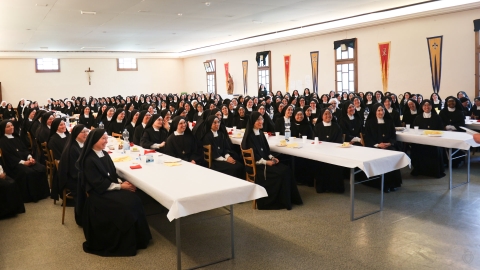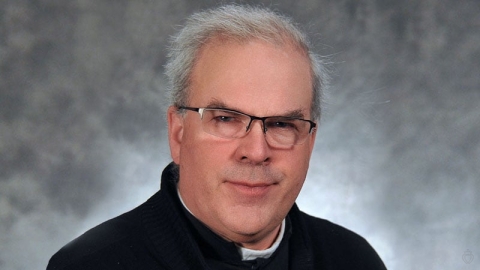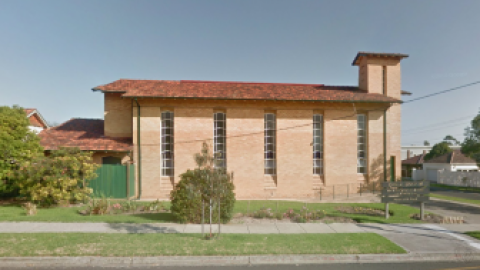50 Years of the New Mass: The Making of the Roman Missal (1)

Saint Grégoire le Grand
Half a century ago, Pope Paul VI imposed a liturgical reform on the whole Church in the name of the Council that had just ended. Thus was born the mass of Vatican II. It was immediately rejected by two cardinals and since then the opposition against it has not weakened. This sad anniversary is an opportunity to trace its story.
Before considering the liturgical reform of Paul VI and the new Mass, it is necessary to recount the history of the Roman missal, since this reform claims to be a continuation of the past. The historical perspective will help with understanding the inanity of this claim.
The development of the Roman missal was spread over several centuries. Even if the essential elements, required for the accomplishment of the holy sacrifice of the Mass have always been present, they have been progressively enshrined in rites which make it possible to understand them and to grasp their deep meaning.
The First Three Centuries
The texts of the New Testament recount the institution of the Holy Eucharist on the evening of Holy Thursday. It is the paschal meal, the new Passover, which establishes the new covenant in the precious Blood of Christ. The day chosen to renew it is Sunday, the day of the Resurrection. The Didache, from the end of the first century, speaks of the “Lord’s Sunday,” and St. Justin attests to it in the second century.
The evangelical texts also mention the “breaking of bread” which translates an essential element of this new worship, the fulfillment of the Lord’s command: “Do this in memory of me.” The Book of the Acts of the Apostles shows this ceremony being performed in private homes: “on the first day of the week, when we were assembled to break bread” (Acts 20:7).
The first buildings reserved for worship appeared fairly quickly, as early as the second century. The oldest church was found at Doura-Europos on the Euphrates; it is dated at about 232. In Rome, we have to wait until the beginning of the third century to find documentary traces of Christian religious buildings. But apart from the First Apology by St. Justin Martyr (died 165), this period provides no details on the unfolding of Christian worship or the prayers employed. Here is a well-known passage of the holy apologist:
“And on the day called Sunday, all who live in cities or in the country gather together to one place, and the memoirs of the apostles or the writings of the prophets are read, as long as time permits; then, when the reader has ceased, the president verbally instructs, and exhorts to the imitation of these good things. Then we all rise together and pray, and, as we before said, when our prayer is ended, bread and wine and water are brought, and the president in like manner offers prayers and thanksgivings, according to his ability, and the congregation assents, saying Amen; and there is a distribution to each, and a participation of that over which thanks have been given, and to those who are absent a portion is sent by the deacons.”
Fourth to Sixth Centuries
The fourth century sees the end of persecution. Now authorized, Christianity can finally deploy its public worship in buildings that are reserved for it: these are the first basilicas. We have quite a few documents from this period on the Eucharistic celebration. According to this literature, it appears that the oldest and only anaphor used in Rome was the Roman canon. So, from that time there was unity in the Roman Eucharistic liturgy.
The mass began with a preparation for sacrifice with readings, psalms, singing of hymns, and a homily at which the catechumens were present. It was followed by the celebration reserved for the faithful with the offertory, the singing of the Sanctus, the canon, the fraction, and communion. The Introït was added in the 6th century. The Kyrie eleison was borrowed from the Greek liturgy as early as the fourth century. At the same time, the Gloria went from the Divine Office—the recitation of the Psalms—to the Mass. From the sixth century on, it is attested that in Rome there were only two readings: the epistle and the gospel.
The preface before the canon is very old, prior to the fourth century; it is followed by the Sanctus. The ceremony of the fracture of the host took place at the end of the canon, during the singing of the Agnus Dei. The Pater which followed it was put in by St. Gregory the Great as the conclusion of the canon, according to Greek custom. The Libera nos after the Pater is known from all the liturgies. The kiss of peace followed the fracture. Communion was made with consecrated bread and chalice, without being sure of the exact mode employed. After the blessing the deacon sang the Ite missa est to dismiss the faithful.
From the Sixth to the Eleventh Century
From St. Gregory the Great, pope from 590 to 604, to St. Gregory VII (1073-1085), an evolution occurred which consisted essentially in the introduction of elements borrowed from the Frankish liturgy. Gaul had received the faith of Rome as well as its liturgy. But a certain degree of Frankification of the Roman liturgy led to the adoption by the Roman missal of particular traditions proper to the Frankish domain.
Charlemagne and his scholars were largely responsible for this hybridization. While they imposed the Roman usages in the Frankish kingdom, the local contributions were numerous. At that time, Gregorian chant flourished.
The Gregorian reform undertaken by St. Leo IX (1002-1054) and completed by Urban II (1088-1099), under the influence of popes of Germanic origin, introduced the Roman-Frankish books to Rome itself, while adding Roman elements. The centralization that resulted from the Gregorian reform definitely consolidated the Roman liturgy thus enriched.
The liturgical books of the 13th century, ancestors of the Tridentine books, are derived from this double movement of hybridization: the introduction of Frankish elements in the Roman Carolingian period, and the addition of Roman elements in the Romano-Frank, during the Gregorian reform.
What emerges from the examination of the available liturgical manuscripts is the great general resemblance of these rites to the Tridentine Rite. There are however many secondary rites, which vary according to the place. But there is always a regular concern for liturgical unity. It results from the duty to look after orthodoxy, but also from the desire to avoid a proliferation that could quickly turn into anarchy.
(Source : C. Barthe – FSSPX.Actualités - 30/11/2019)





